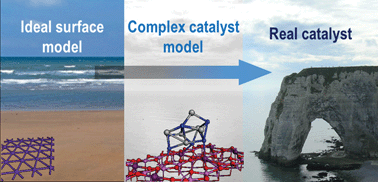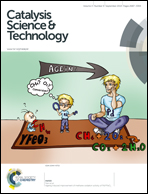Density functional theory simulations of complex catalytic materials in reactive environments: beyond the ideal surface at low coverage
Abstract
Most efficient heterogeneous catalysts used industrially are generally very complex systems. Far away from perfect crystallinity and well-defined oriented surfaces at low coverage, they involve structural disorder, heterogeneous site distribution with variable coordination and structural dependence upon the chemical environment. Unravelling their atomic-scale structures and understanding their roles in the catalytic reaction are not easy tasks, as the respective contributions of each type of site to the spectroscopic or catalytic responses are generally convoluted. Computational chemistry is of great help to address these issues. In the present perspective review, we highlight two relevant systems involved in numerous industrial applications: the amorphous silica alumina support; and subnanometric platinum clusters, possibly doped with tin and/or indium, supported on γ-Al2O3. The structural complexity is inherent to the amorphous nature of an oxide support on the one hand, and to the ultra-dispersed form of a mono- and multi-metallic catalyst on the other hand. In each case, Density Functional Theory (DFT) calculation was used to provide an original structure for active sites and to reveal how the corresponding multi-step reactions are influenced. Moreover, we highlight how theoretical studies including coverage effects on complex systems, induced by (T, P) reaction conditions, offer enriched perspectives with respect to studies on ideal surfaces at low coverage.


 Please wait while we load your content...
Please wait while we load your content...